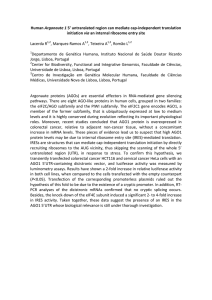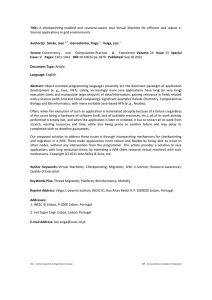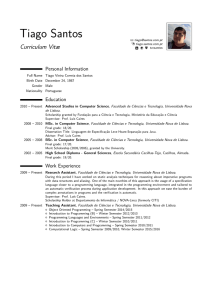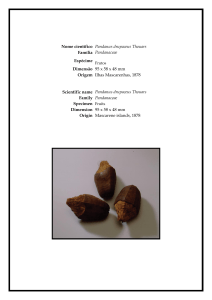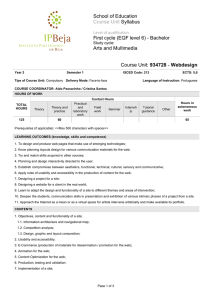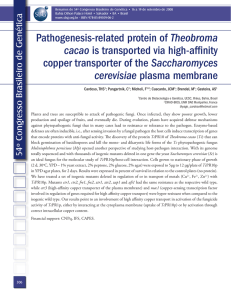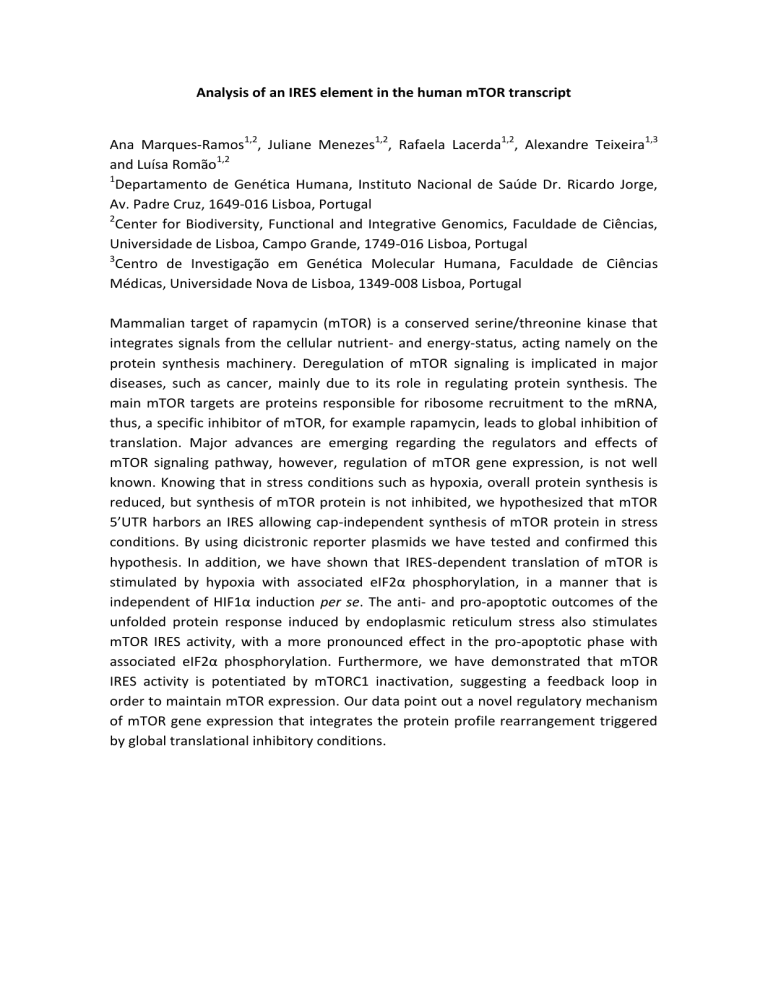
Analysis of an IRES element in the human mTOR transcript
Ana Marques-Ramos1,2, Juliane Menezes1,2, Rafaela Lacerda1,2, Alexandre Teixeira1,3
and Luísa Romão1,2
1
Departamento de Genética Humana, Instituto Nacional de Saúde Dr. Ricardo Jorge,
Av. Padre Cruz, 1649-016 Lisboa, Portugal
2
Center for Biodiversity, Functional and Integrative Genomics, Faculdade de Ciências,
Universidade de Lisboa, Campo Grande, 1749-016 Lisboa, Portugal
3
Centro de Investigação em Genética Molecular Humana, Faculdade de Ciências
Médicas, Universidade Nova de Lisboa, 1349-008 Lisboa, Portugal
Mammalian target of rapamycin (mTOR) is a conserved serine/threonine kinase that
integrates signals from the cellular nutrient- and energy-status, acting namely on the
protein synthesis machinery. Deregulation of mTOR signaling is implicated in major
diseases, such as cancer, mainly due to its role in regulating protein synthesis. The
main mTOR targets are proteins responsible for ribosome recruitment to the mRNA,
thus, a specific inhibitor of mTOR, for example rapamycin, leads to global inhibition of
translation. Major advances are emerging regarding the regulators and effects of
mTOR signaling pathway, however, regulation of mTOR gene expression, is not well
known. Knowing that in stress conditions such as hypoxia, overall protein synthesis is
reduced, but synthesis of mTOR protein is not inhibited, we hypothesized that mTOR
5’UTR harbors an IRES allowing cap-independent synthesis of mTOR protein in stress
conditions. By using dicistronic reporter plasmids we have tested and confirmed this
hypothesis. In addition, we have shown that IRES-dependent translation of mTOR is
stimulated by hypoxia with associated eIF2α phosphorylation, in a manner that is
independent of HIF1α induction per se. The anti- and pro-apoptotic outcomes of the
unfolded protein response induced by endoplasmic reticulum stress also stimulates
mTOR IRES activity, with a more pronounced effect in the pro-apoptotic phase with
associated eIF2α phosphorylation. Furthermore, we have demonstrated that mTOR
IRES activity is potentiated by mTORC1 inactivation, suggesting a feedback loop in
order to maintain mTOR expression. Our data point out a novel regulatory mechanism
of mTOR gene expression that integrates the protein profile rearrangement triggered
by global translational inhibitory conditions.

